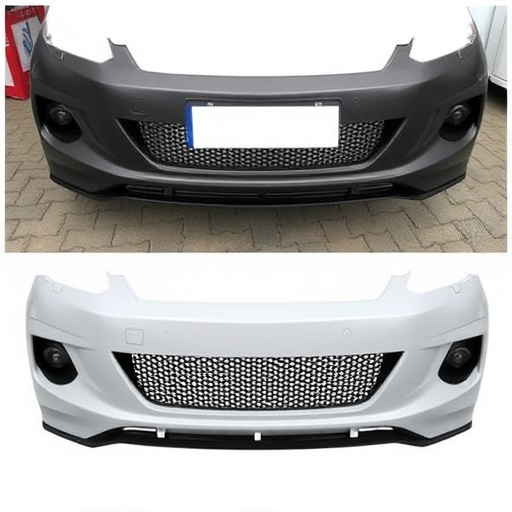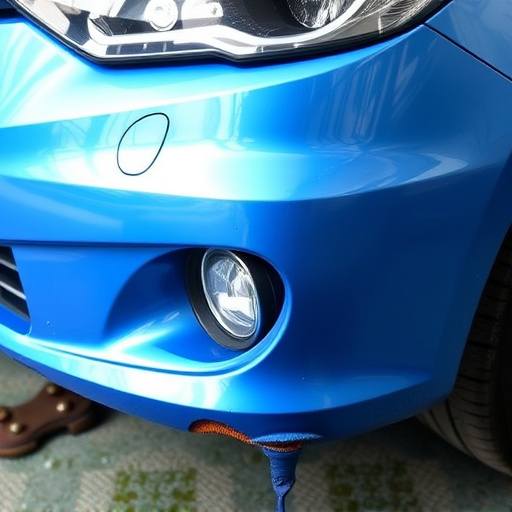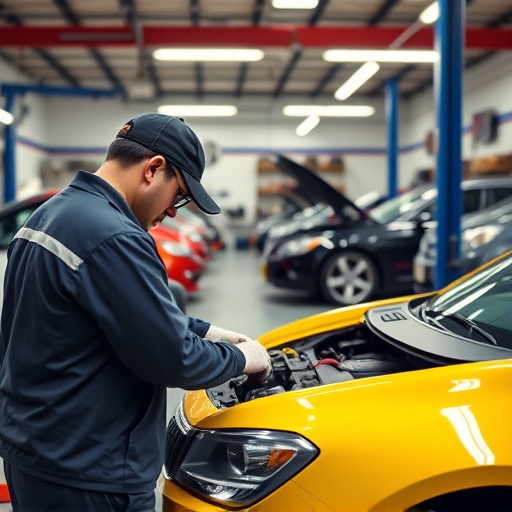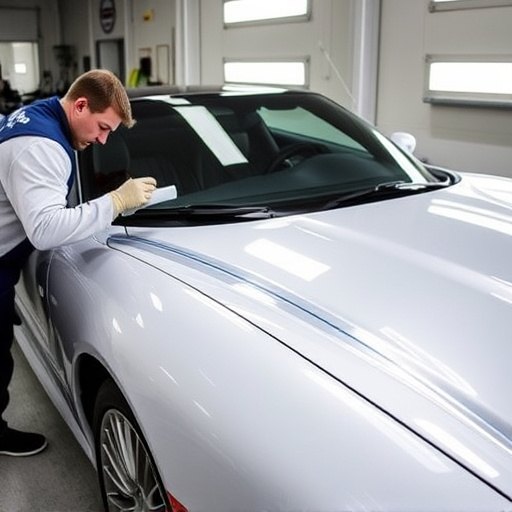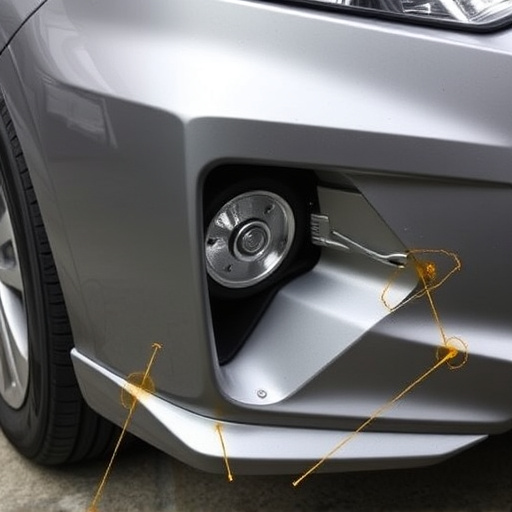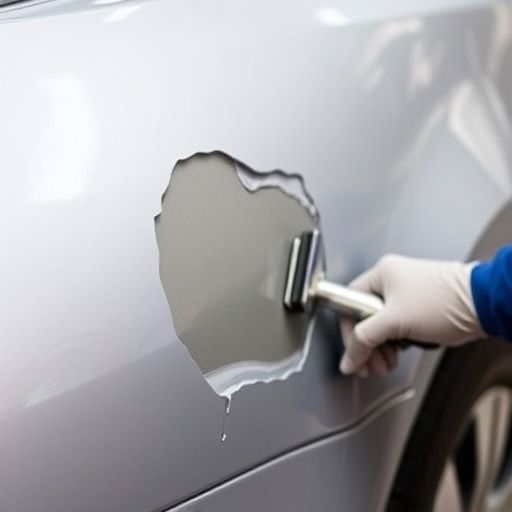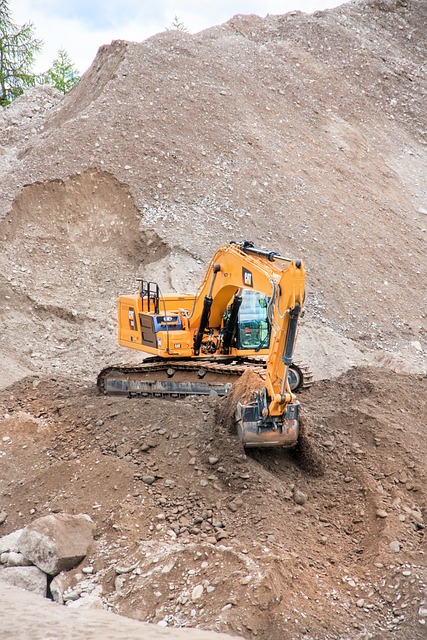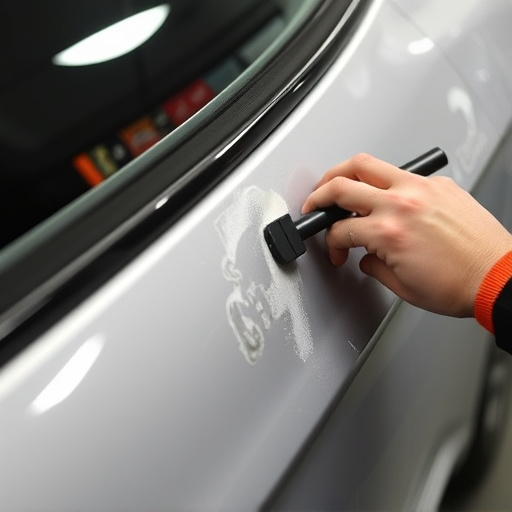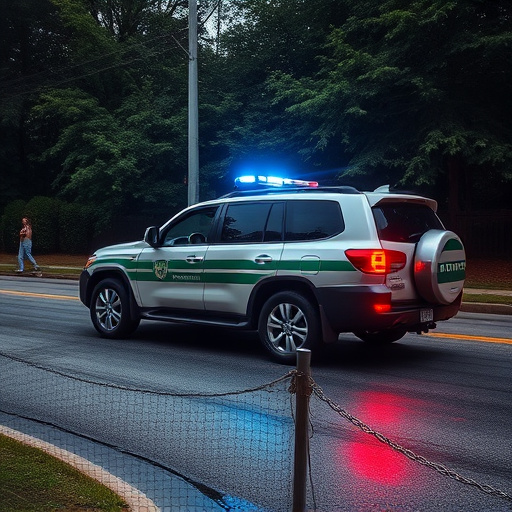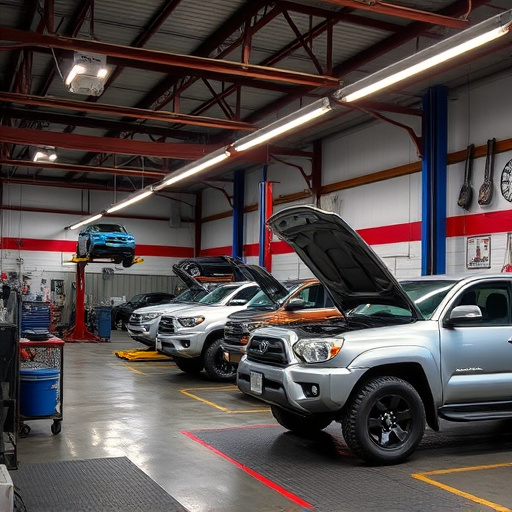Tesla collision diagnostics leverage advanced technology to accurately assess vehicle damage post-accidents, identifying issues from sensor malfunctions to structural discrepancies. This holistic approach enhances safety features, streamlines repairs, and improves decision-making for fleet services, resulting in higher quality, faster turnaround times, and better customer service. Proper diagnostics ensure hidden damage is detected, preventing unnecessary repairs and guaranteeing optimal vehicle performance after accidents.
In today’s world, understanding Tesla collision diagnostics is paramount after accidents. This comprehensive guide delves into the intricate process of evaluating damage on Tesla vehicles. With advanced technology playing a pivotal role in post-accident analysis, these diagnostics ensure safety and accuracy. Professional diagnosis is essential to navigate complex repairs, offering peace of mind for Tesla owners. Learn why meticulous Tesla collision diagnostics are a game changer in vehicle restoration.
- Understanding Tesla Collision Diagnostics: A Comprehensive Guide
- The Role of Advanced Technology in Post-Accident Analysis
- Ensuring Safety and Accuracy: Why Professional Diagnosis is Essential
Understanding Tesla Collision Diagnostics: A Comprehensive Guide
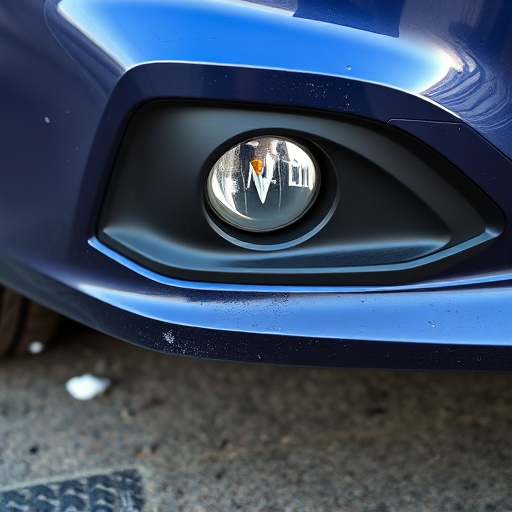
Tesla collision diagnostics are an essential aspect of modern vehicle maintenance, especially after accidents. These advanced systems go beyond traditional car repair services by offering a comprehensive understanding of a Tesla’s condition following a collision. By utilizing cutting-edge technology, Tesla vehicles are equipped with built-in sensors and software that capture detailed data during an impact, providing invaluable insights for accurate diagnostics. This information includes sensor readings, vehicle dynamics, and structural integrity checks, enabling technicians to perform precise assessments.
Understanding Tesla collision diagnostics involves recognizing the car’s ability to self-report damage. Unlike conventional frame straightening methods, these diagnostics consider the entire vehicle as a complex network of interconnected systems. This holistic approach ensures that any potential issues, from sensor malfunctions to structural discrepancies, are identified and addressed. As a result, owners can benefit from efficient repairs, enhanced safety features, and optimal performance, making Tesla collision diagnostics a game-changer in the automotive repair services industry.
The Role of Advanced Technology in Post-Accident Analysis
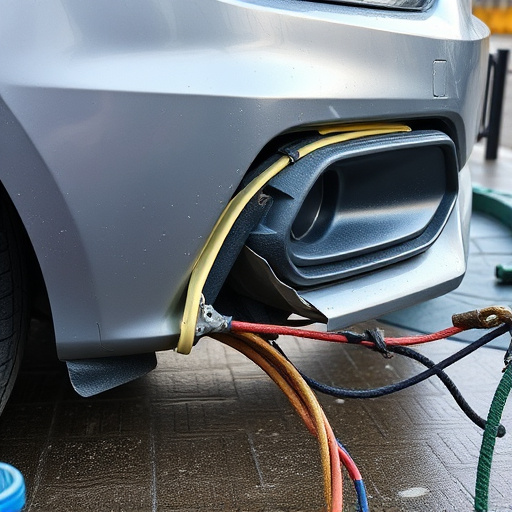
The role of advanced technology in post-accident analysis is indispensable for modern automotive repairs, and Tesla collision diagnostics stand as a prime example. These innovative systems go beyond traditional methods by providing comprehensive data and insights into vehicle performance and structural integrity following a collision. Through the integration of sophisticated sensors, cameras, and software algorithms, Tesla vehicles can accurately assess damage, identify potential safety hazards, and even predict repair complexities before any physical examination. This capability not only streamlines the collision diagnostics process but also ensures that repairs are conducted efficiently, effectively, and with precision.
Moreover, advanced technology in Tesla collision diagnostics offers significant advantages for fleet repair services and automotive repair businesses. By leveraging real-time data and intelligent analysis, repair technicians gain a deeper understanding of vehicle dynamics, enabling them to make informed decisions about replacement parts, structural modifications, and safety enhancements. This not only contributes to the overall quality of repairs but also facilitates faster turnaround times, ultimately catering to the diverse needs of modern automotive customers.
Ensuring Safety and Accuracy: Why Professional Diagnosis is Essential
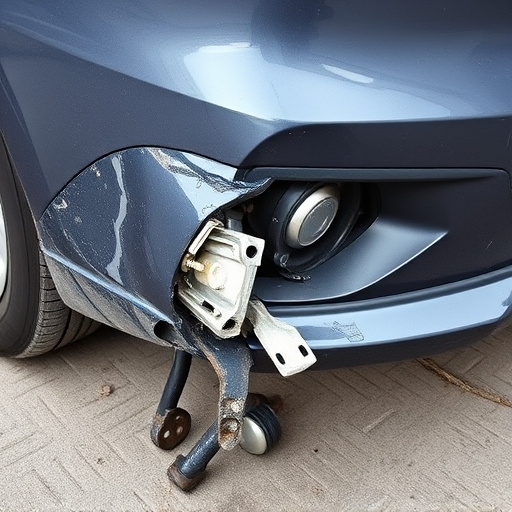
After a collision, ensuring safety and accuracy in diagnosing vehicle damage is paramount. While some minor issues might be readily apparent, many modern vehicles, especially Teslas, have intricate systems that require specialized knowledge to assess fully. Professional Tesla collision diagnostics are crucial because they go beyond visual inspections. These services employ advanced tools and trained technicians to meticulously examine every component, from the chassis and electronics to sensors and software.
This in-depth approach guarantees that no hidden damage goes unnoticed, which is especially important for safety-related systems like brakes or airbags. Moreover, a professional diagnosis can prevent owners from undertaking unnecessary repairs or overlooking genuine issues, thereby saving time and money in the long run. It’s not just about fixing tire services or car scratch repair; it’s about ensuring that every aspect of your vehicle is safe and functioning optimally after an accident.
Tesla collision diagnostics play a pivotal role in ensuring safety, accuracy, and efficient post-accident analysis. With advanced technology integrated into Tesla vehicles, proper diagnosis becomes essential for understanding the true extent of damage. Professional evaluation guarantees that every component is meticulously checked, providing owners with peace of mind and facilitating a smoother repair process. Embracing these modern diagnostics is crucial for maintaining the integrity of electric vehicle (EV) components and ensuring optimal performance upon restoration.
